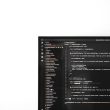The “Start PXE over IPv4” error is a common issue encountered during the boot process of a computer. PXE, or Preboot eXecution Environment, is a protocol that enables a computer to boot from a network interface before booting from a local storage device like a hard drive. This error indicates that the computer is attempting to boot from the network, but encountering a problem. In this comprehensive guide, we’ll explore four effective methods to fix this issue and bypass PXE boot.

Method 1: Adjust Boot Priority in BIOS/UEFI Settings
1. Restart Your Computer
– Before anything start by restarting your computer.
2. Access BIOS/UEFI Settings
– During the startup process, look for a prompt to enter the BIOS/UEFI settings. This is usually indicated by a key like F2, F10, DEL, ESC, or a combination (e.g., F2 + DEL). Press the corresponding key to enter the settings.
3. Navigate to Boot Priority
– Inside the BIOS/UEFI settings, locate the boot priority or boot order options. This is where you specify the order in which devices are checked for bootable information.
4. Change Boot Order
– Set the primary boot device to your hard drive or SSD (Solid State Drive), and ensure that the network boot option (PXE) is lower in priority.
5. Save and Exit
– Save the changes and exit the BIOS/UEFI settings. Your computer will now attempt to boot from the selected device first.
Method 2: Disable PXE Boot in BIOS/UEFI Settings
1. Access BIOS/UEFI Settings
– Follow the steps outlined in Method 1 to access the BIOS/UEFI settings.
2. Locate PXE Boot Option
– Inside the settings, look for an option related to PXE or network boot.
3. Disable PXE Boot
– Toggle the PXE boot option to “Disabled” or “Off”.
4. Save and Exit
– Save the changes and exit the BIOS/UEFI settings. This will prevent the computer from attempting a network boot.
Method 3: Check Boot Device Order in One-Time Boot Menu
1. Restart Your Computer
– Restart your computer.
2. Access One-Time Boot Menu
– During startup, look for a prompt that allows you to access the one-time boot menu. This is usually indicated by a key like F12, ESC, F9, or a similar combination. Press the corresponding key.
3. Select Boot Device
– In the one-time boot menu, choose the device from which you want to boot. Select your hard drive or SSD.
4. Boot from Chosen Device
– Press Enter to boot from the selected device.

Method 4: Disconnect Network Cable or Disable Network Boot
1. Physically Disconnect Network Cable (For Desktops)
– If you’re using a desktop computer, you can physically disconnect the network cable from the Ethernet port on the back of the computer. This will prevent the computer from attempting a network boot.
2. Disable Network Boot Option (For Laptops/Desktops)
– Access the BIOS/UEFI settings as described in Method 1. Look for an option related to network boot or PXE. Disable it to prevent the computer from attempting a network boot.
3. Save and Exit
– Save the changes and exit the BIOS/UEFI settings.
Additional Tips
1. Update BIOS/UEFI Firmware
– Outdated firmware can sometimes cause boot issues. Check the manufacturer’s website for any available updates to your computer’s BIOS/UEFI.
2. Check for Hardware Issues
– If the issue persists, it’s possible there may be a hardware problem with your hard drive, SSD, or network interface. Consider seeking professional assistance.
3. Contact Manufacturer Support
– If none of the above methods work, contact the manufacturer’s support for specific guidance related to your computer model.
Dealing with the “Start PXE over IPv4” error can be a frustrating experience, but with the methods outlined in this guide, you have several effective ways to bypass PXE boot and get your computer up and running smoothly. Remember to approach each method carefully and make sure to save any changes you make in the BIOS/UEFI settings. If you’re still encountering difficulties, consider seeking assistance from the manufacturer’s support team or a knowledgeable technician. With persistence and the right approach, you’ll be able to overcome this issue and have your computer operating as it should.






